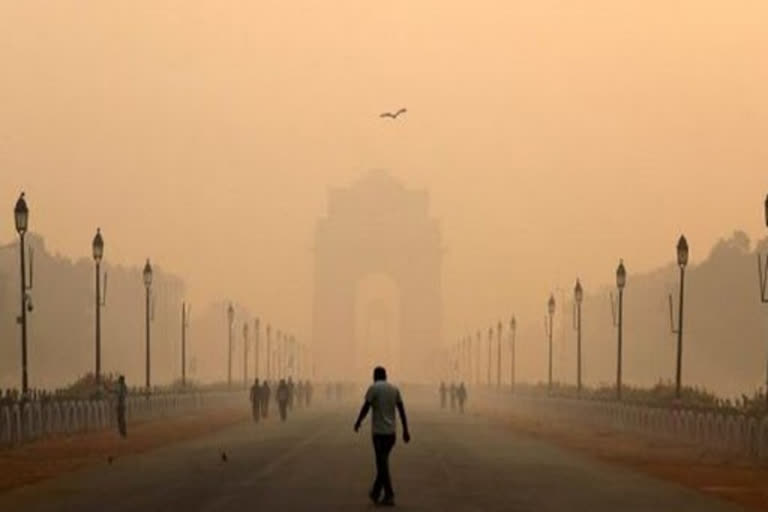New Delhi: With the sharp increase in air pollution in the national capital, several public health experts have flagged a rise in the number of patients reporting chronic obstructive pulmonary disease and asthma.
The air pollution reaches a crescendo in Delhi and surrounding regions every winter, when pollution from stubble burning combines with the suspended water droplets in the lower atmosphere to form a thick blanket of noxious smog, thus creating health hazards.
The city's 24-hour average air quality index (AQI) stood at 249, which falls in the 'poor' category. The System of Air Quality Weather Forecasting and Research categorises air quality in the 0-50 range as good, 51-100 as satisfactory, 101-200 as moderate, 201-300 as poor, 301-400 as very poor and above 400 as severe.
Delhi-based doctor Shuchin Bajaj said, "With the onset of winter and stubble burning in the surrounding states, the COPD and asthma cases are both starting to rise. It has now become all the more important to protect us from Covid-19. When your lungs are compromised and weak, you have more chances of developing complications like pneumonia during Covid."
The Internal Medicines specialist at Ujala Cygnus Group of Hospitals further urged people to take care of 'SMS' -- social distancing, mask and sanitisation more so in the coming days. The Disaster Management has cautioned that Delhi will be seeing 15,000 cases per day in winters. So, please eat healthy, exercise and follow SMS."
Also read: Govt announces cash-for-LTC, festival advance to boost consumer demand
Another doctor flagged the increase in respiratory-related cases. Dr Arunesh Kumar, senior consultant and head respiratory medicine and pulmonology in the Paras Hospital said, "We are seeing a surge in patients with worsening chest symptoms coming to the pulmonology OPD. It is important to seek medical opinion if you notice worsening of chest symptoms. Get your pneumonia and flu vaccine if you have been advised to have one this winter."
He added, "Wearing a face mask is the single most effective way of keeping one safe from COVID-19 as well as pollution this winter. Avoiding strenuous outdoor exercise during peak pollution hours is also beneficial. For people with chronic lung diseases, it is very important to be compliant to their treatment."
Dr. Piyush Goel, pulmonology and critical care at the Columbia Asia Hospital said, "The government should ensure policy measures to prevent pollution -- no stubble burning should be allowed, vehicular pollution should be avoided, and construction protocols should be followed. Besides, we must recognize that it is a collective responsibility of people to work together to defeat both Covid-19 and pollution."
As per the Central Pollution Control Board, out of 35 pollution monitoring stations, the air quality index in as many as 27 stations is in the poor category, while four stations recorded the index in the moderate category and four remained non-functional.
Vivek Vihar in Delhi eastern district recorded the highest AQI at 332, followed by 301 by the pollution monitoring station at north-west Delhi's Jahangirpuri. The area near Delhi Technical University recorded 296 AQI.
Delhi's neighbouring areas, including Ghaziabad, Faridabad, Noida, Greater Noida, Meerut and Gurugram have also recorded poor quality of air. Ghaziabad and Greater Noida's air is currently the most polluted amongst all.
According to the System of Air Quality Weather Forecasting and Research (SAFAR), which comes under the aegis of the Ministry of Earth Sciences, the improvement in air quality is forecasted. It is forecasted to marginally improve to the lower end of poor to the high-end moderate category for tomorrow and further betterment is expected by October 14.
Also read: Jharkhand police probe use of electric shock on suspects
"Though stubble burning fires observed yesterday around Punjab, Haryana, and neighbouring border regions with SAFAR synergized fire count estimated as 614 on 11th October but the count is nearly one eight of the peak values observed in the last two years," a statement issued by SAFAR said.
It added, "The peak fire count and impact are expected by the first week of November. Delhi AQI with marginal stubble contribution in PM2.5 is estimated at three per cent on 12th October. It is likely to reduce by 13th due to changes in wind direction."
IANS



